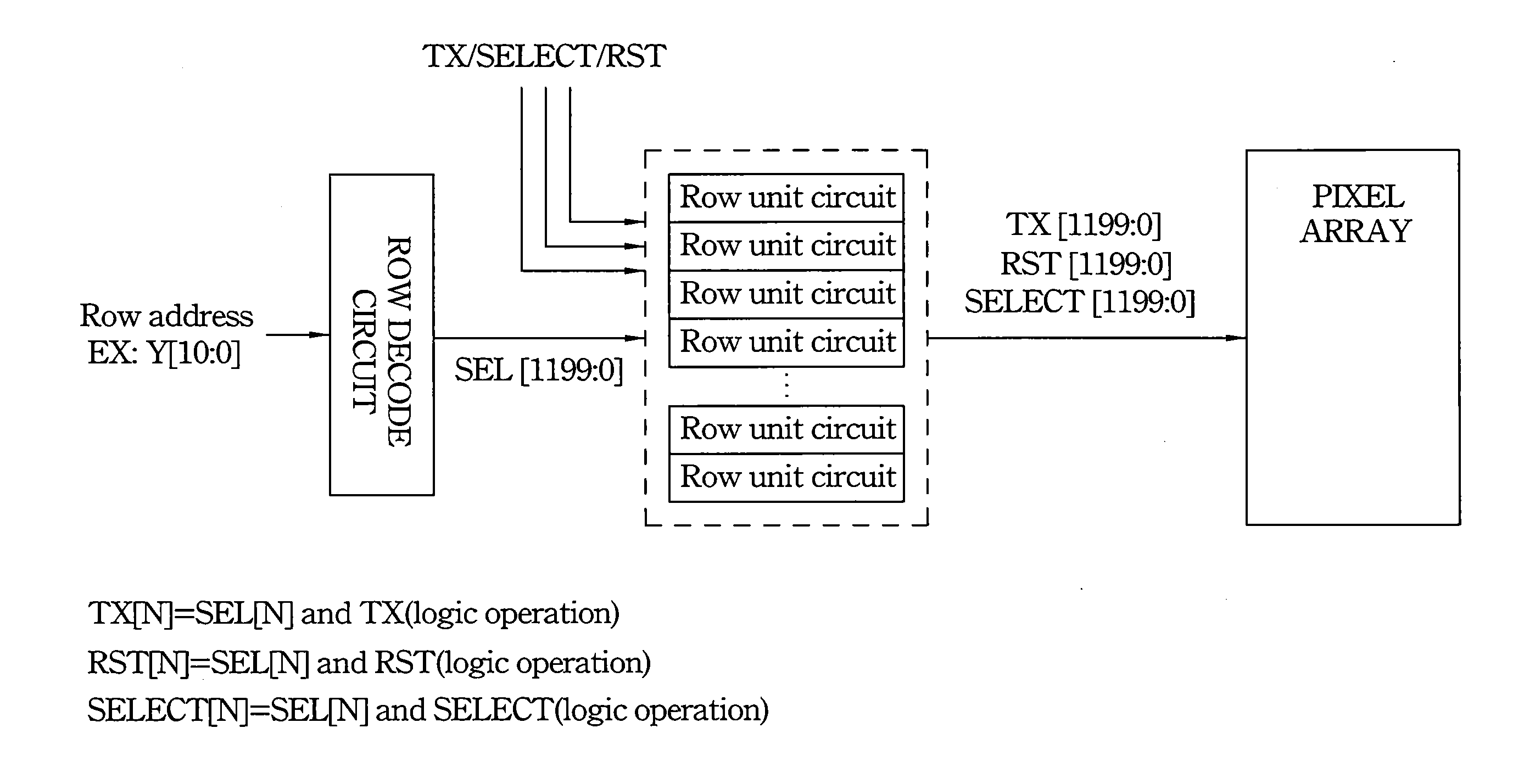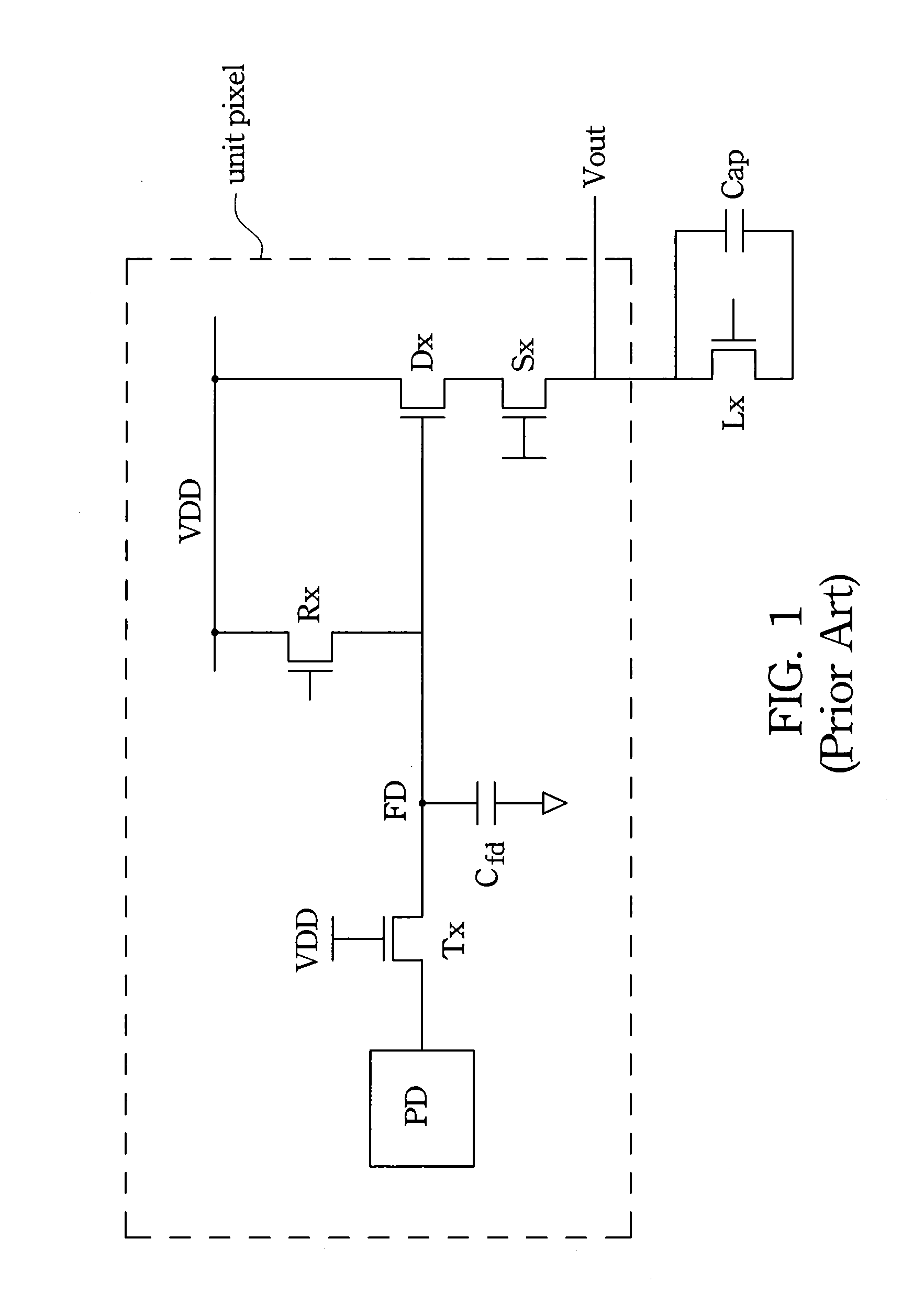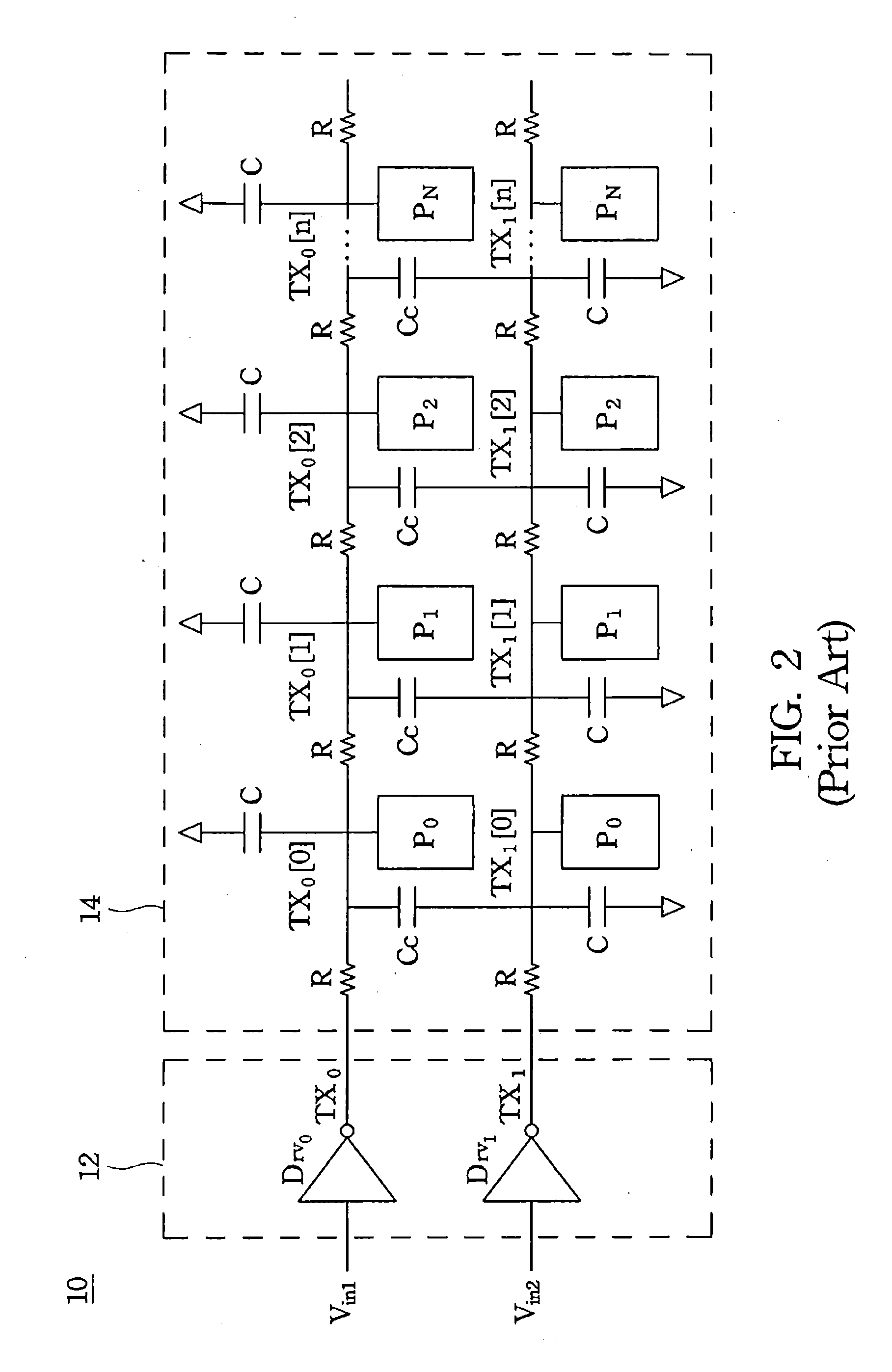CMOS sensor with low partition noise and low disturbance between adjacent row control signals in a pixel array
a pixel array and control signal technology, applied in the field of cmos image sensor row control circuit, can solve the problems of noise, degrade the performance of the image sensor, and several transfer transistors,
- Summary
- Abstract
- Description
- Claims
- Application Information
AI Technical Summary
Benefits of technology
Problems solved by technology
Method used
Image
Examples
Embodiment Construction
[0037]This description of the exemplary embodiments is intended to be read in connection with the accompanying drawings, which are to be considered part of the entire written description. Terms concerning electrical attachments, coupling and the like, such as “connected” and “interconnected,” refer to a relationship wherein structures communicate with one another either directly or indirectly through intervening structures, unless expressly described otherwise.
[0038]An improved image sensor, such as a CMOS image sensor, is described below in connection with the drawings. In embodiments of the sensor, the CMOS image sensor is configured to reduce both partition noise of the CMOS image sensor and the disturbance between adjacent row control signals.
[0039]FIG. 6 is a circuit diagram of an embodiment of the present invention of a CMOS image sensor 100 having a buffer 62 for providing row control signals and a pixel array 64 with two adjacent row control signal lines, X and Y. While only...
PUM
 Login to View More
Login to View More Abstract
Description
Claims
Application Information
 Login to View More
Login to View More - R&D
- Intellectual Property
- Life Sciences
- Materials
- Tech Scout
- Unparalleled Data Quality
- Higher Quality Content
- 60% Fewer Hallucinations
Browse by: Latest US Patents, China's latest patents, Technical Efficacy Thesaurus, Application Domain, Technology Topic, Popular Technical Reports.
© 2025 PatSnap. All rights reserved.Legal|Privacy policy|Modern Slavery Act Transparency Statement|Sitemap|About US| Contact US: help@patsnap.com



